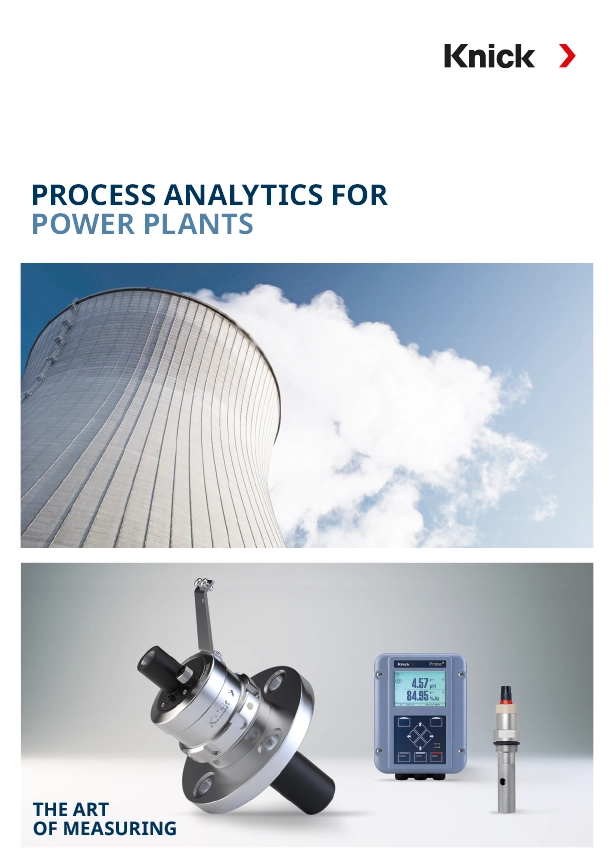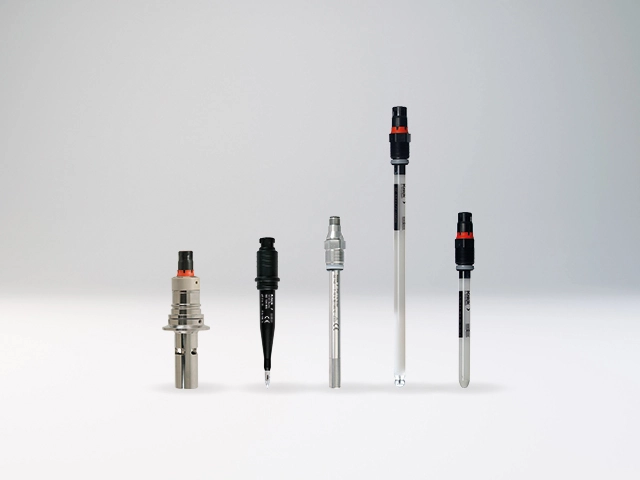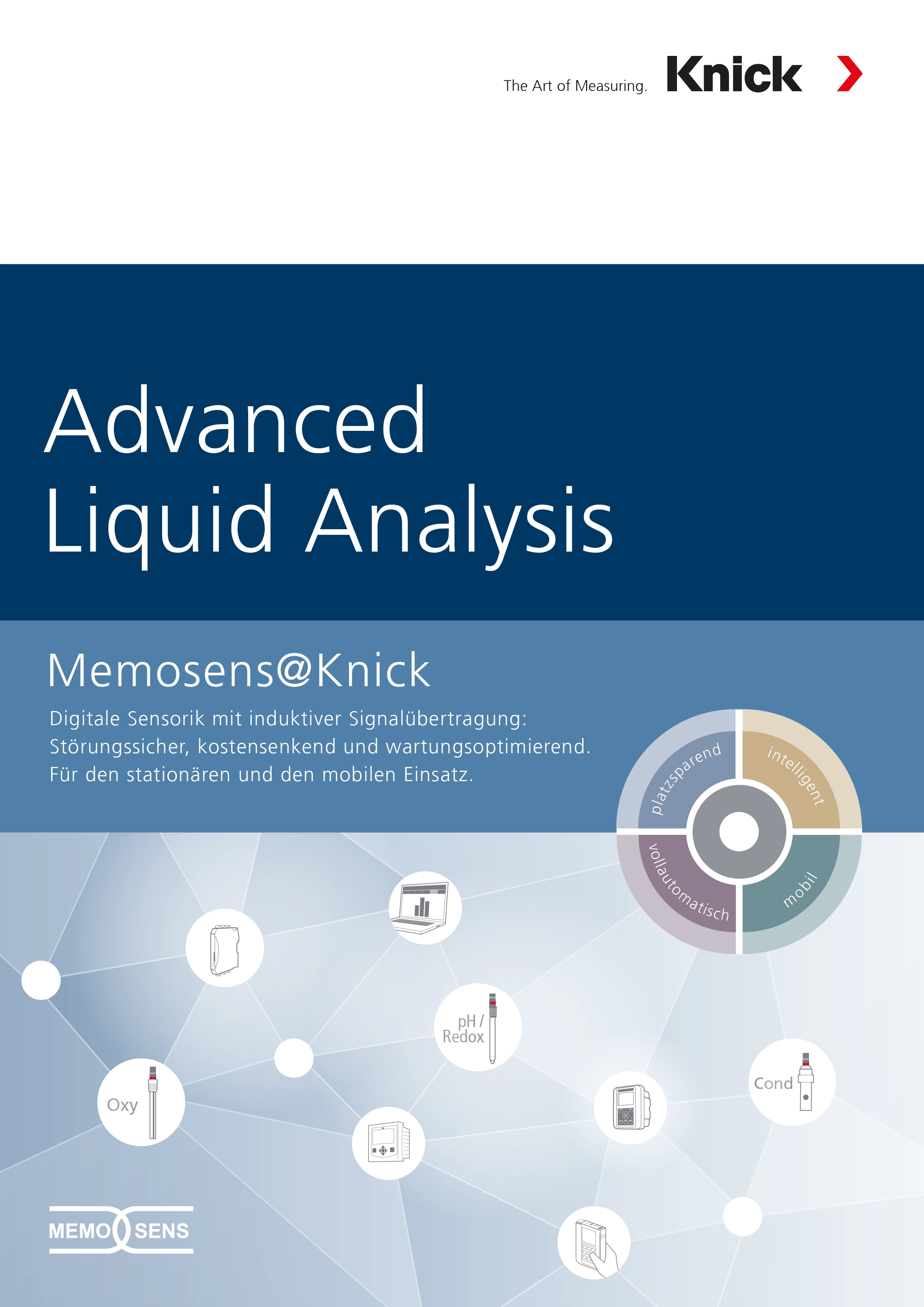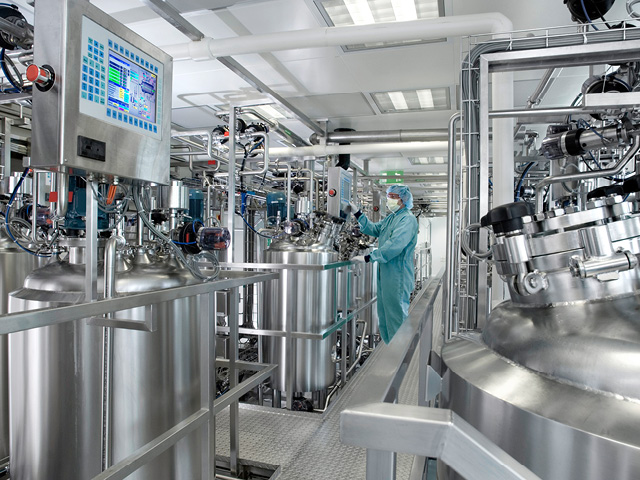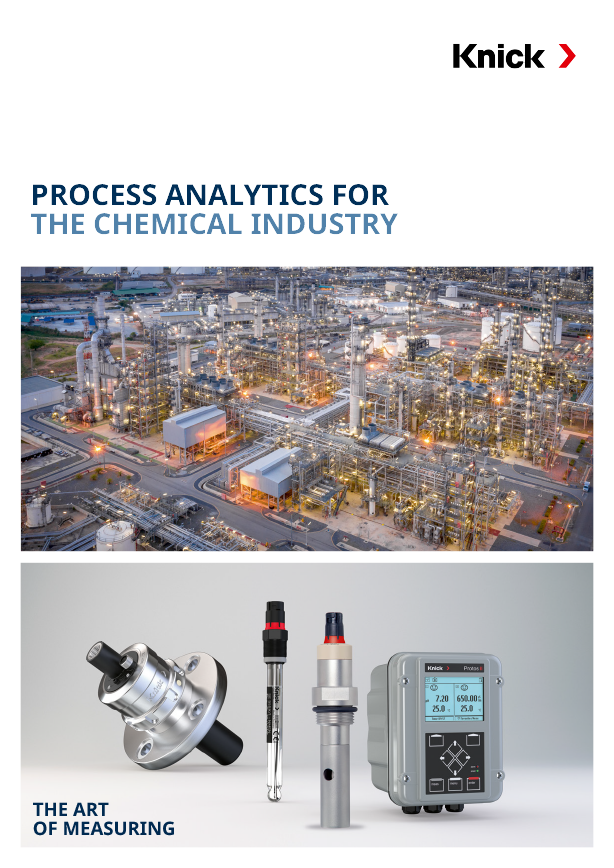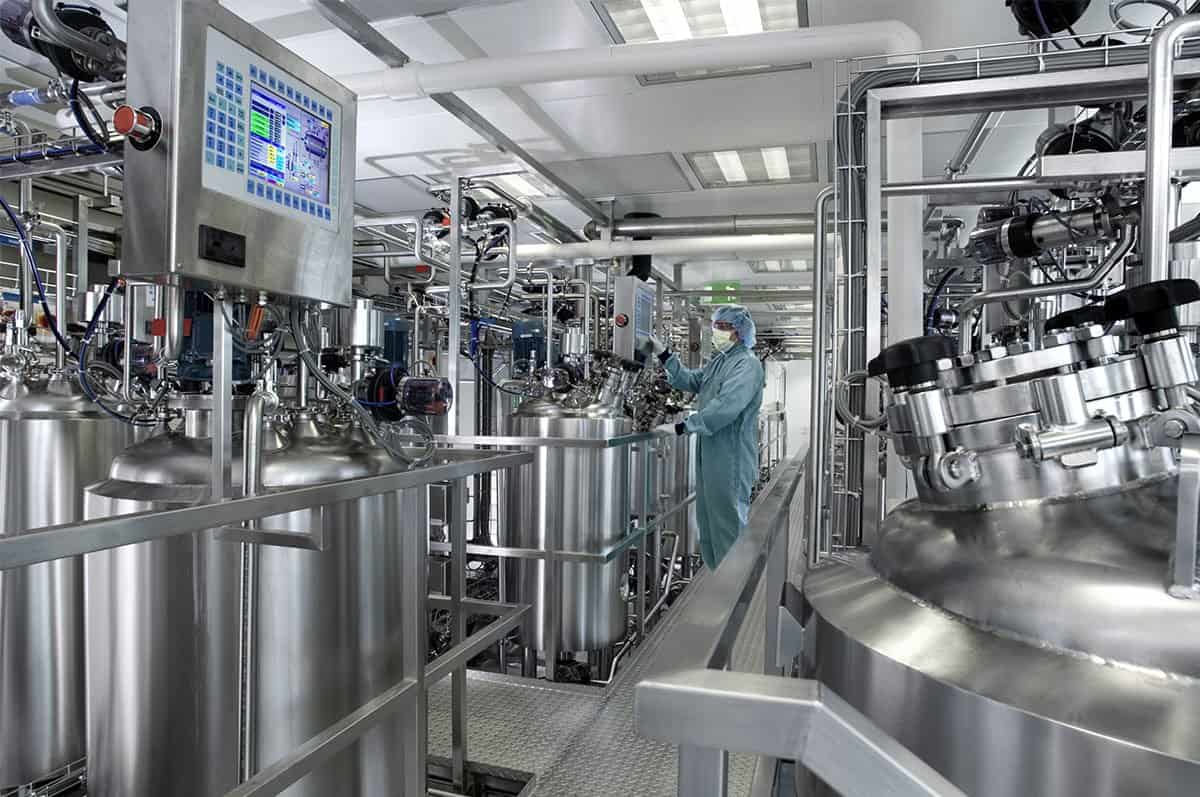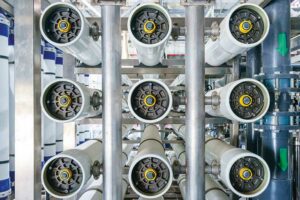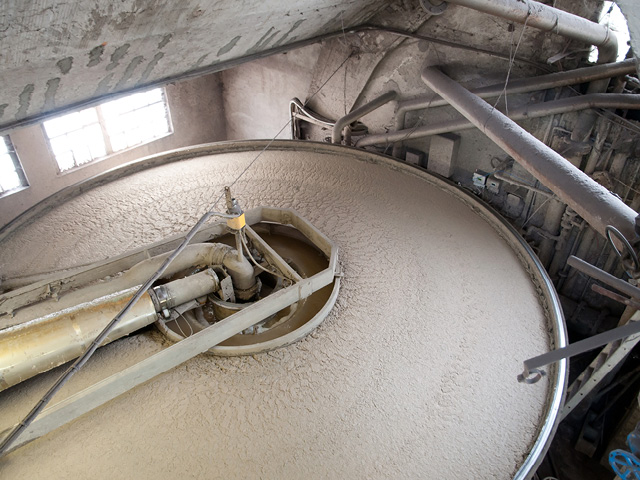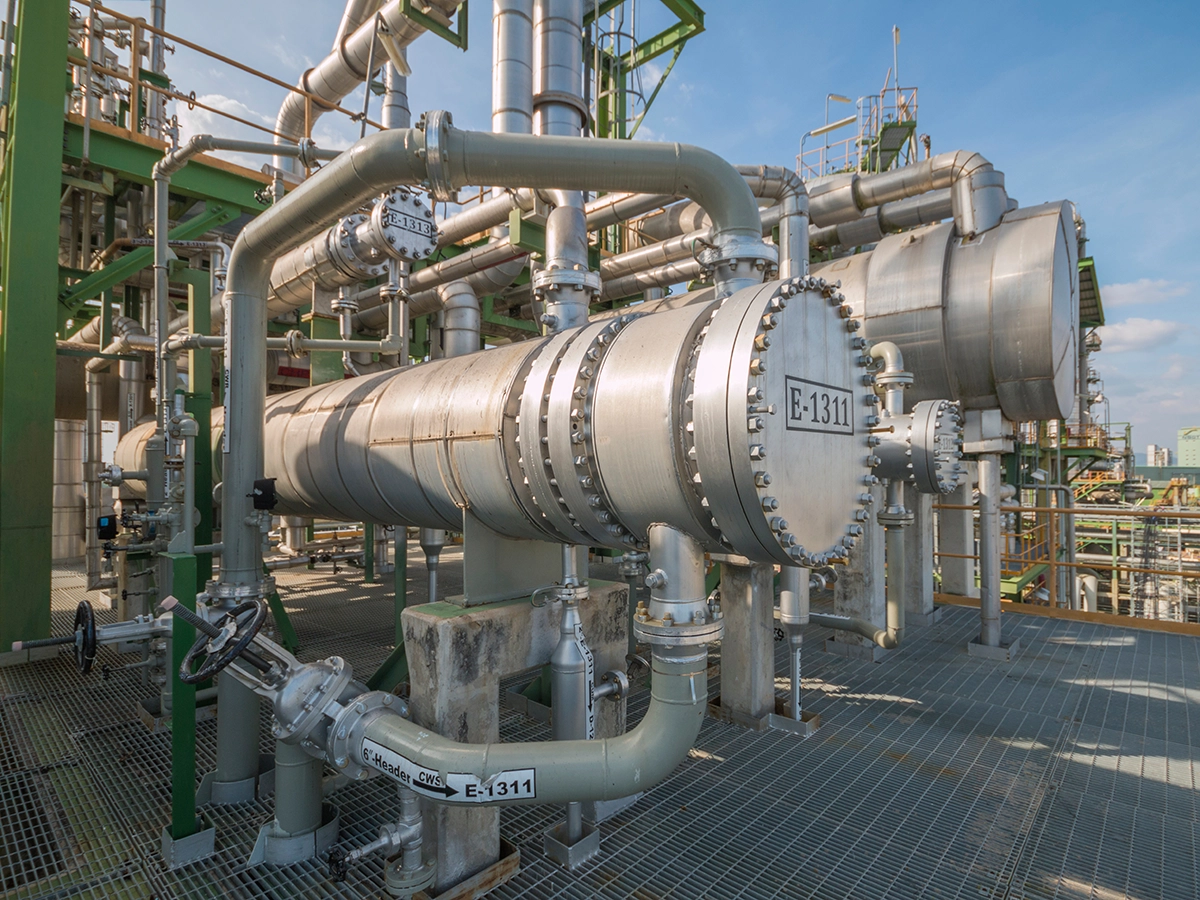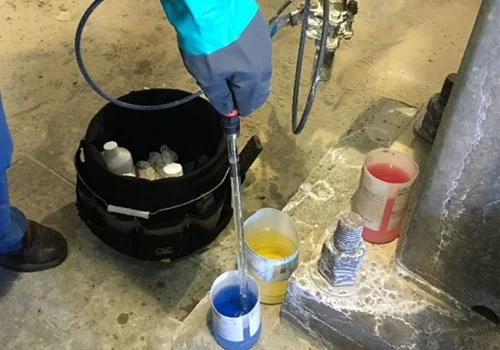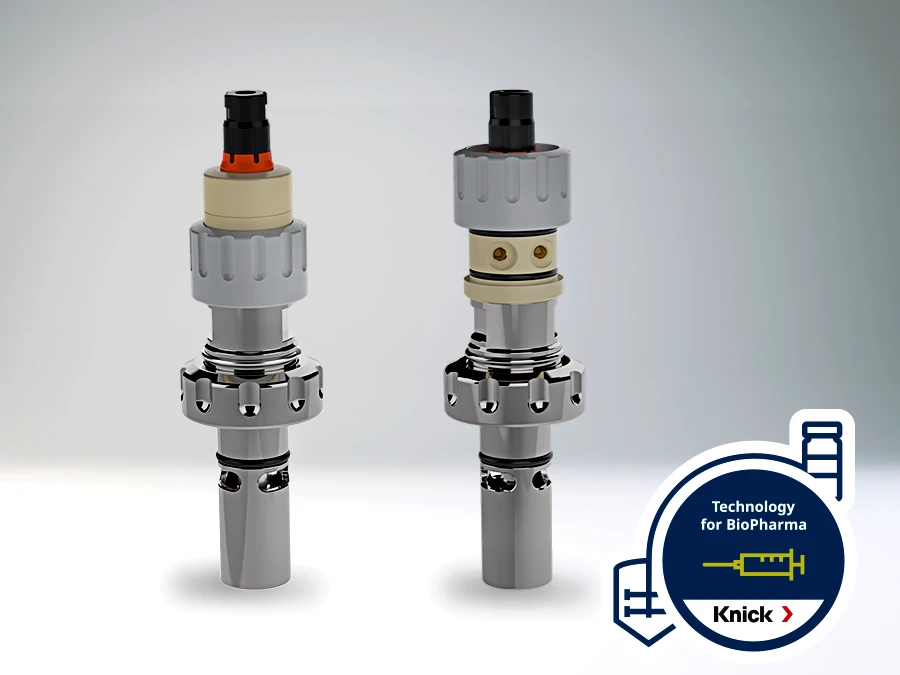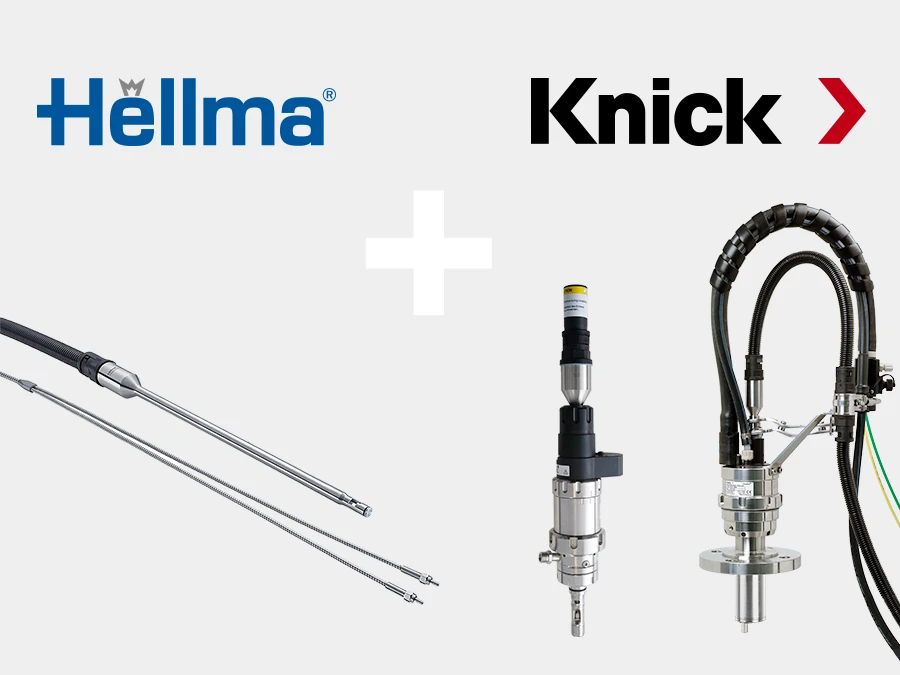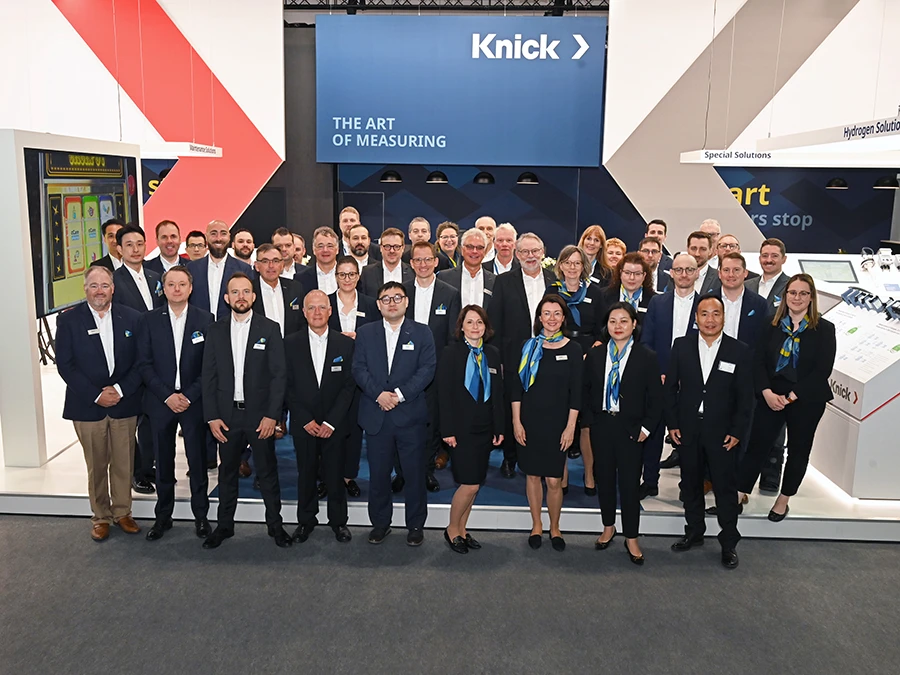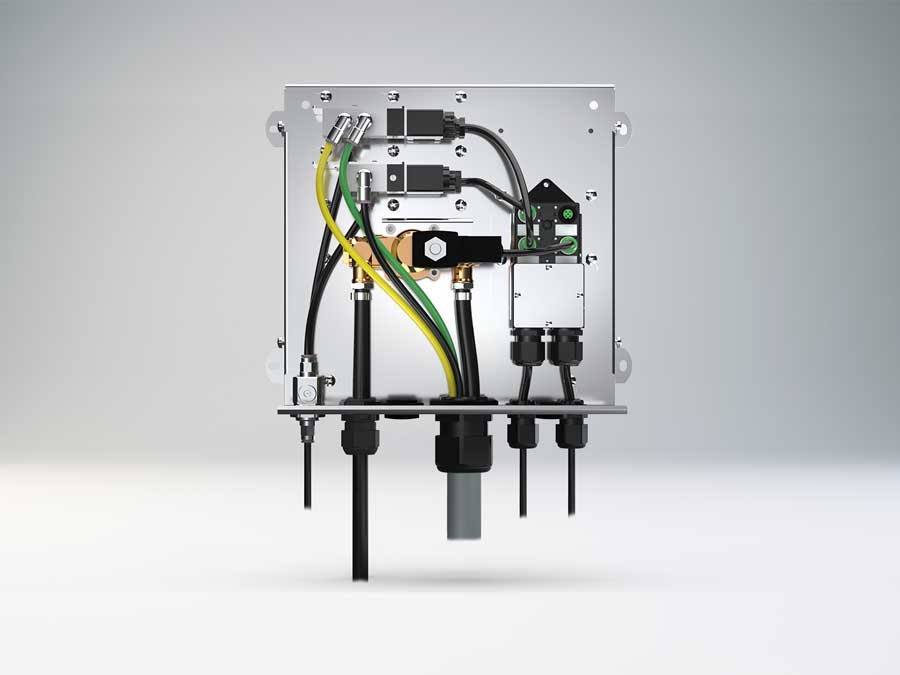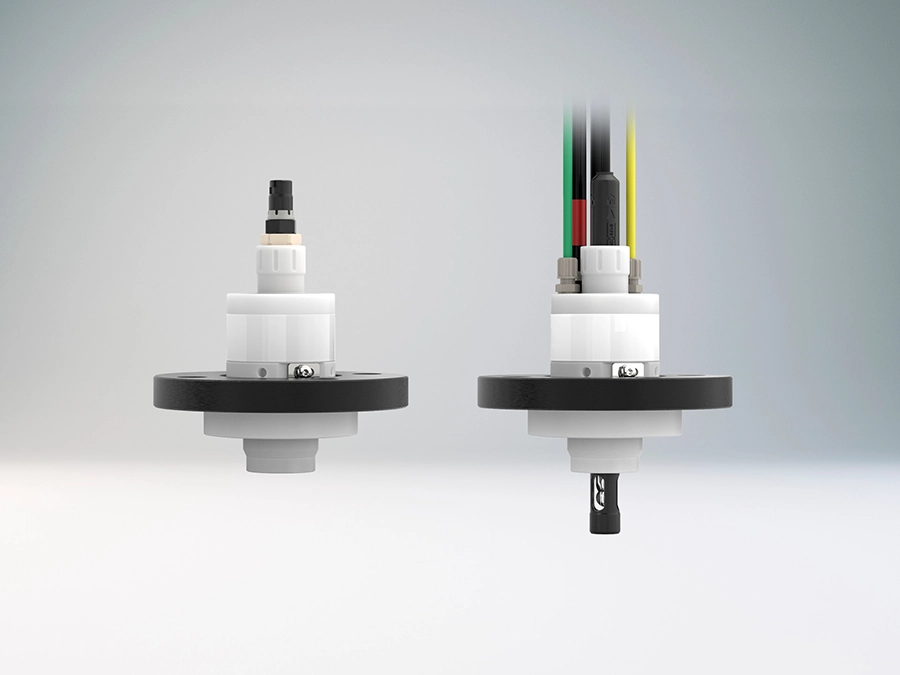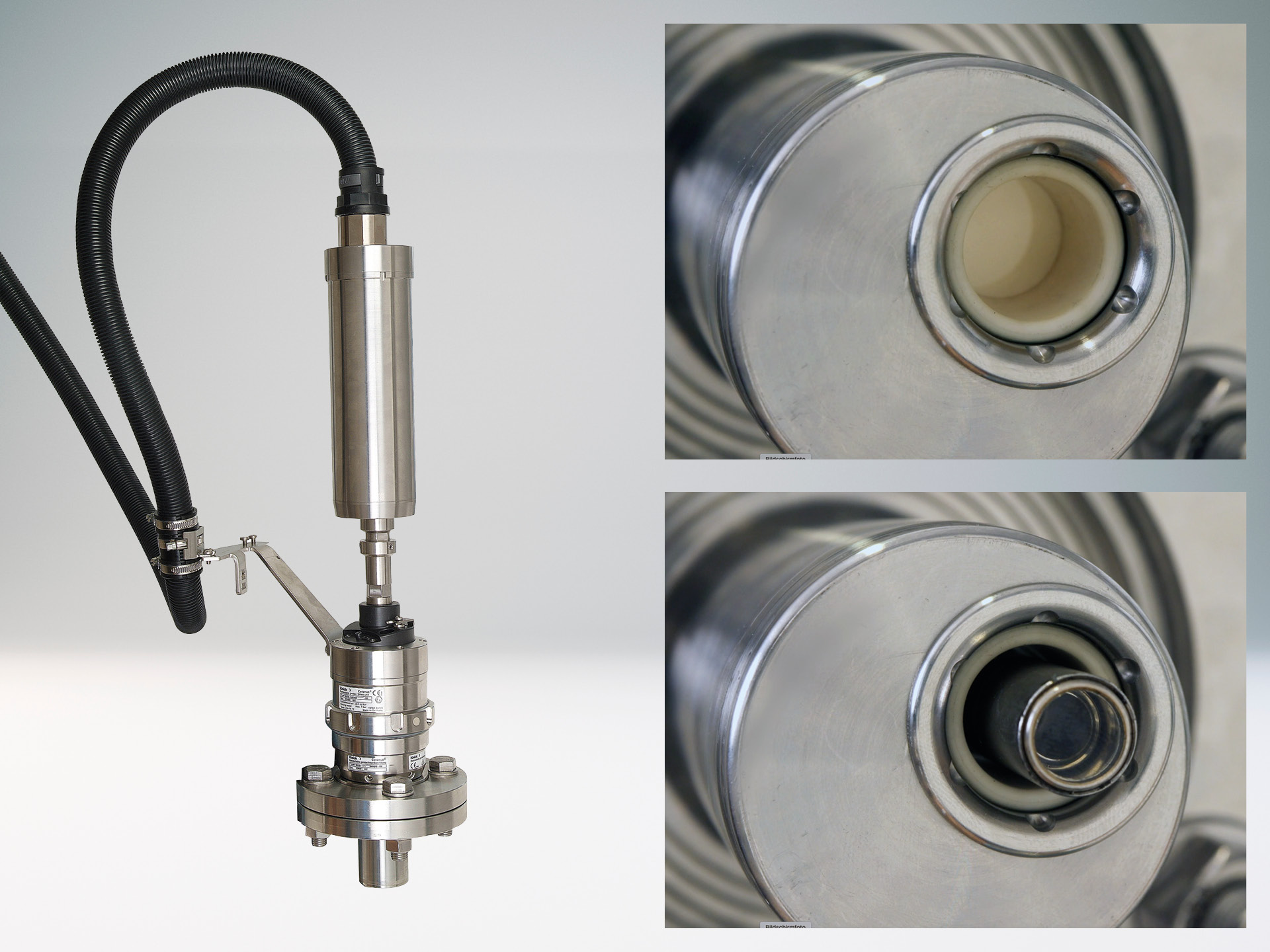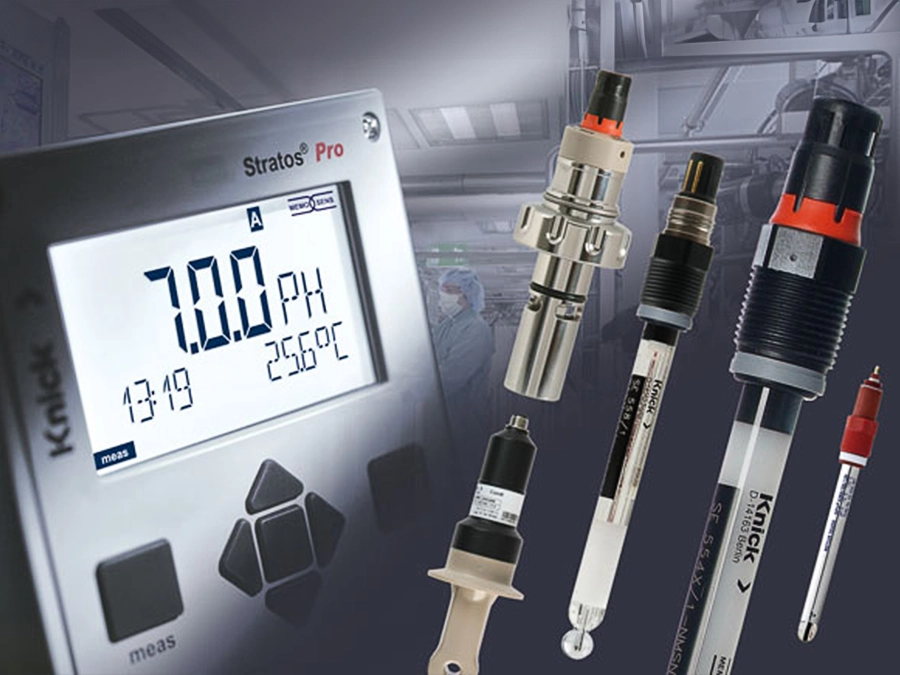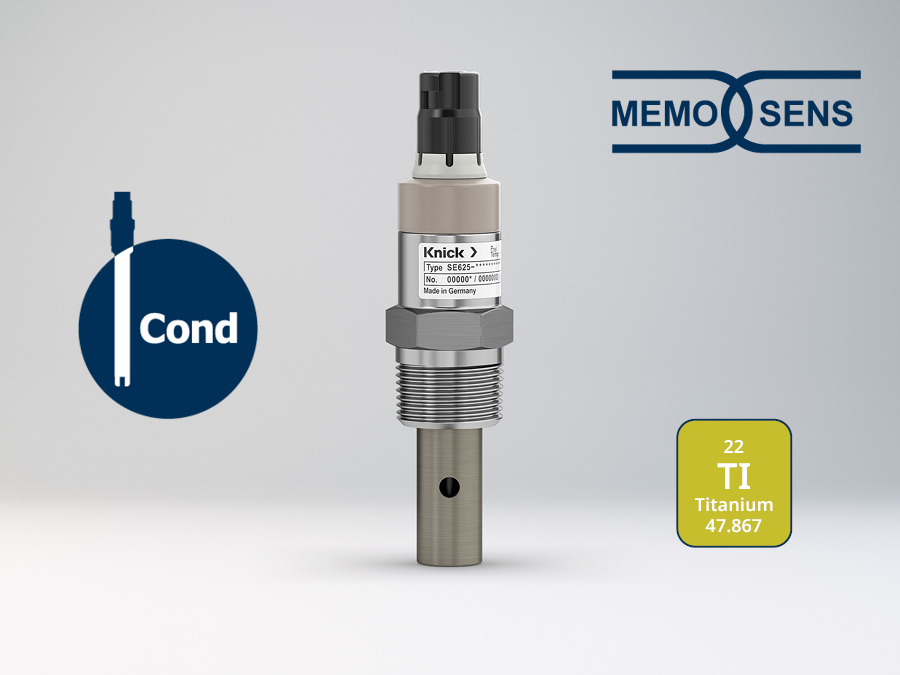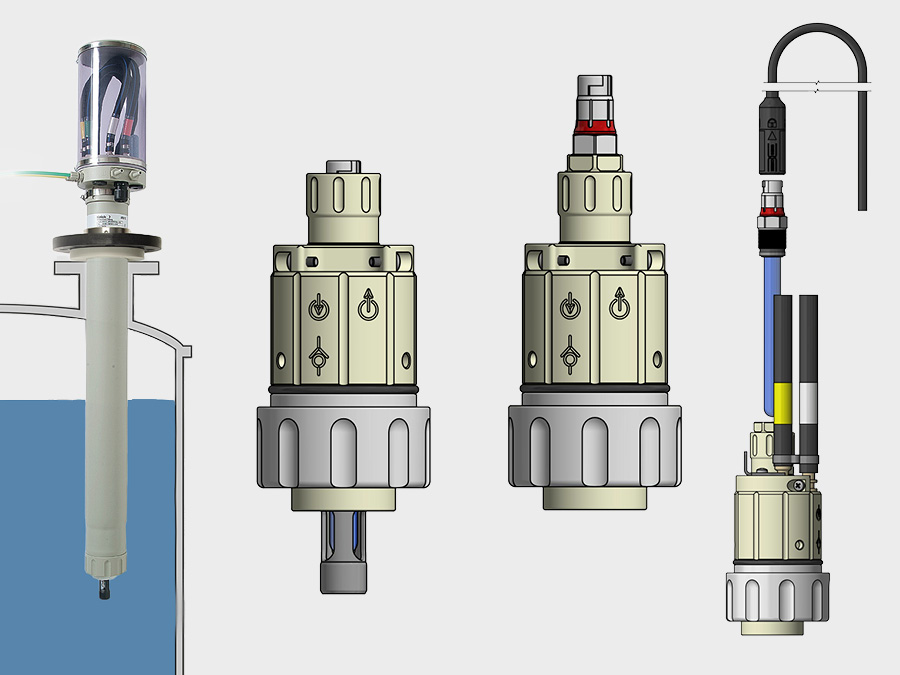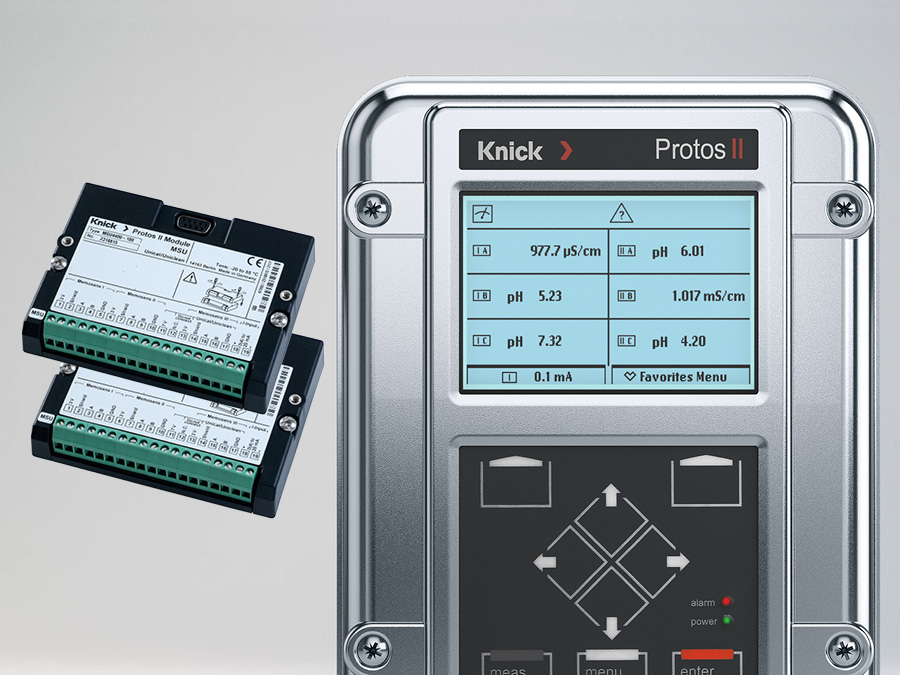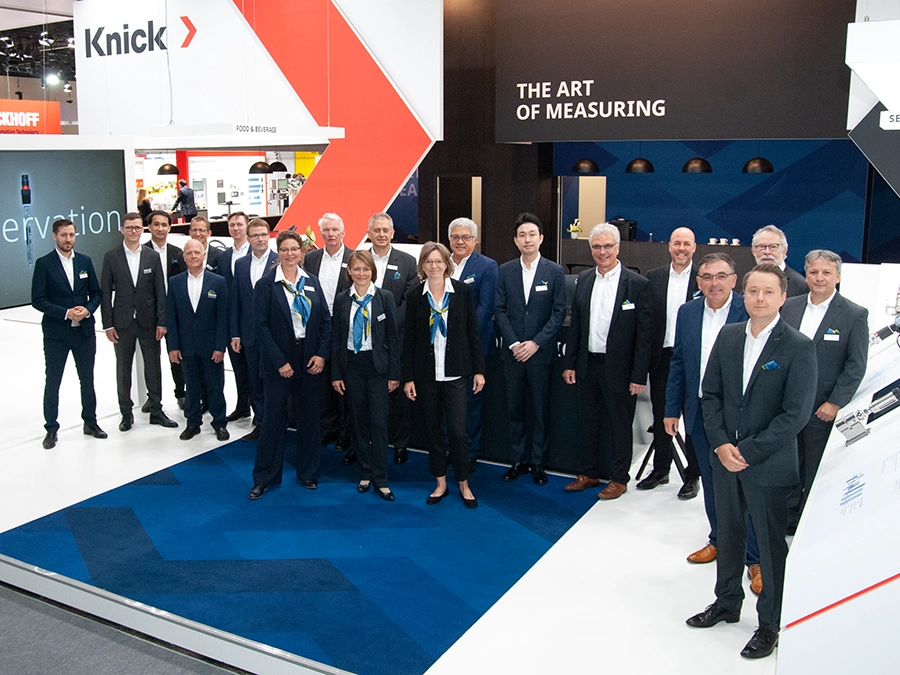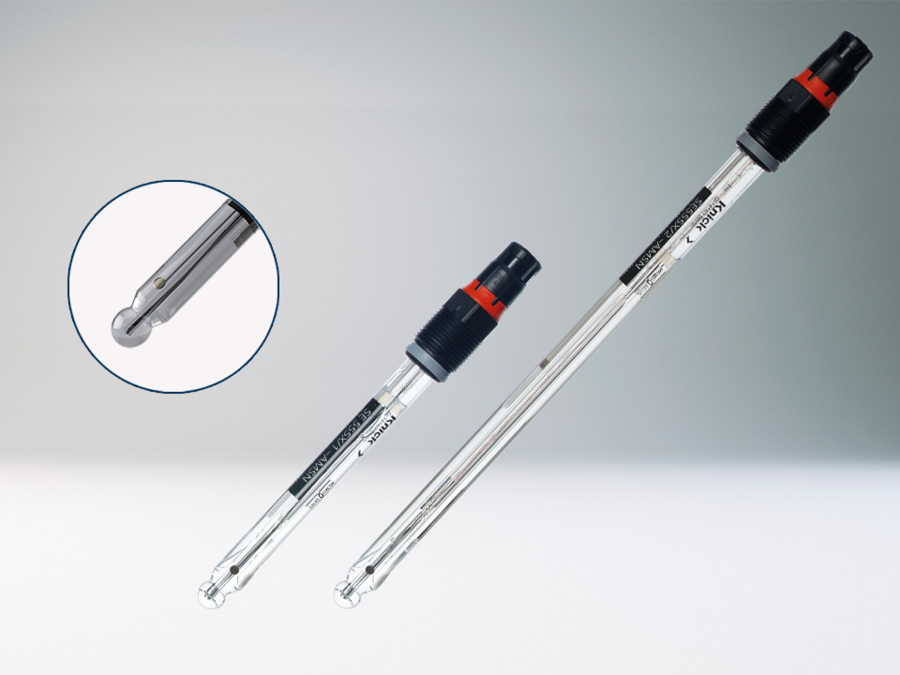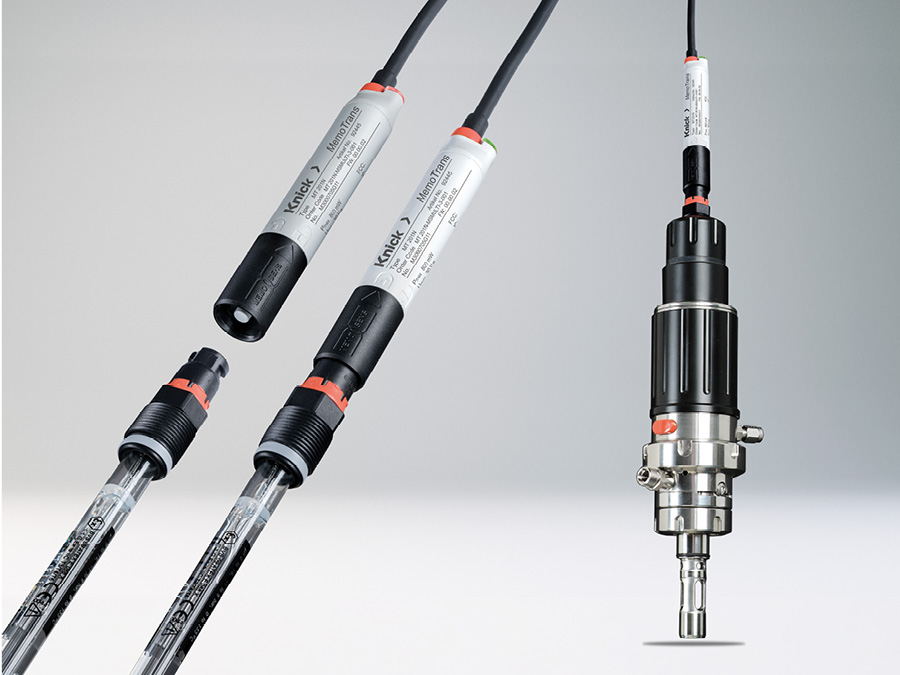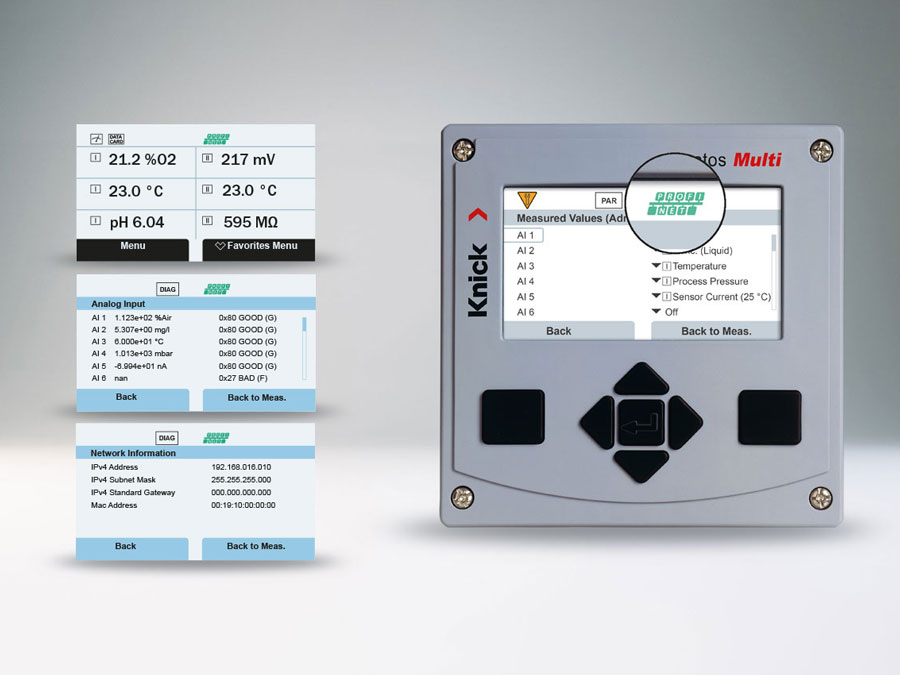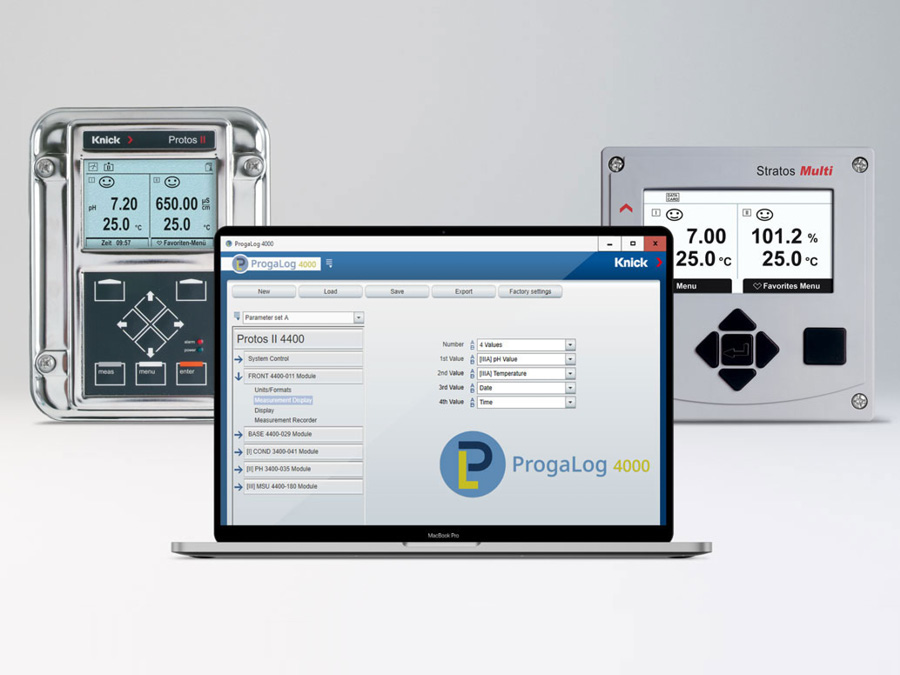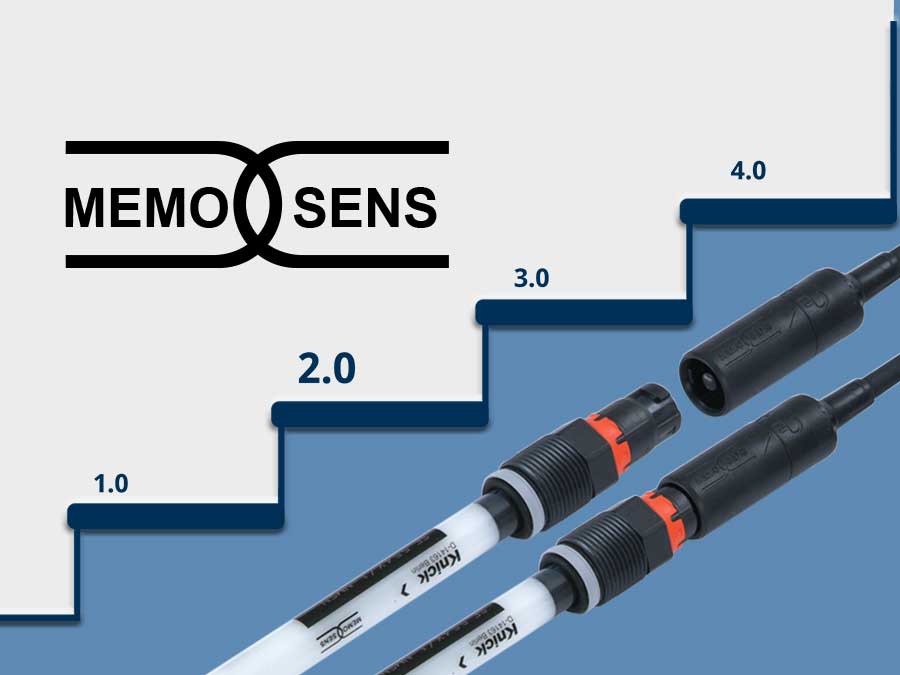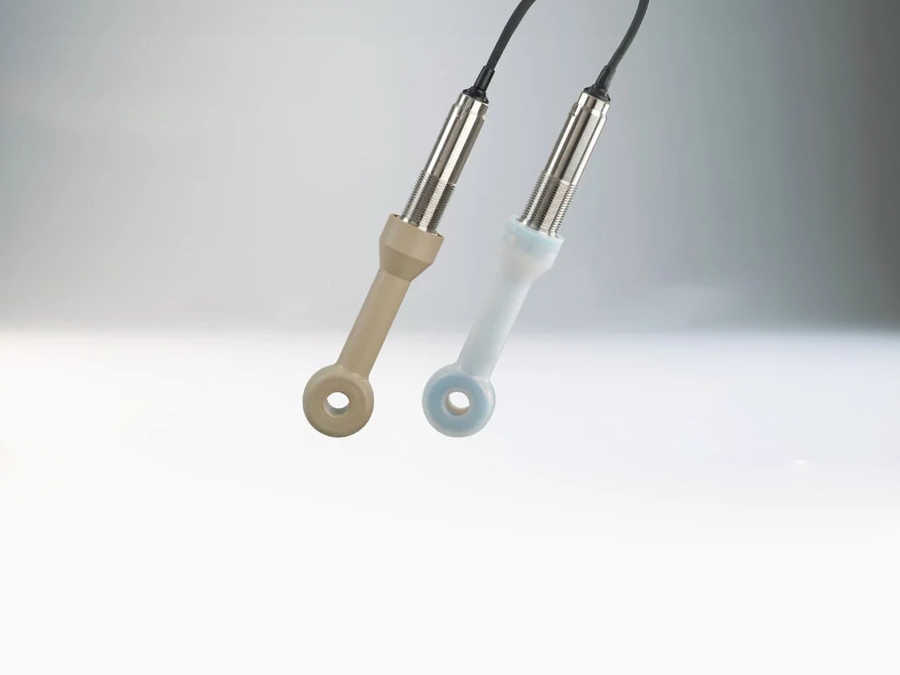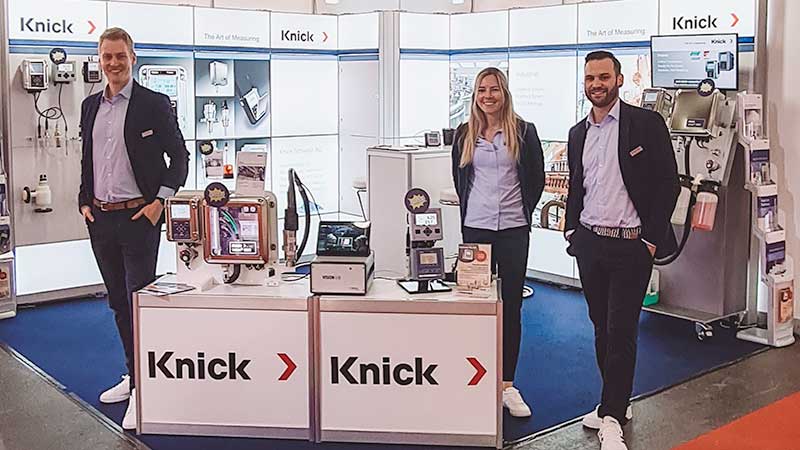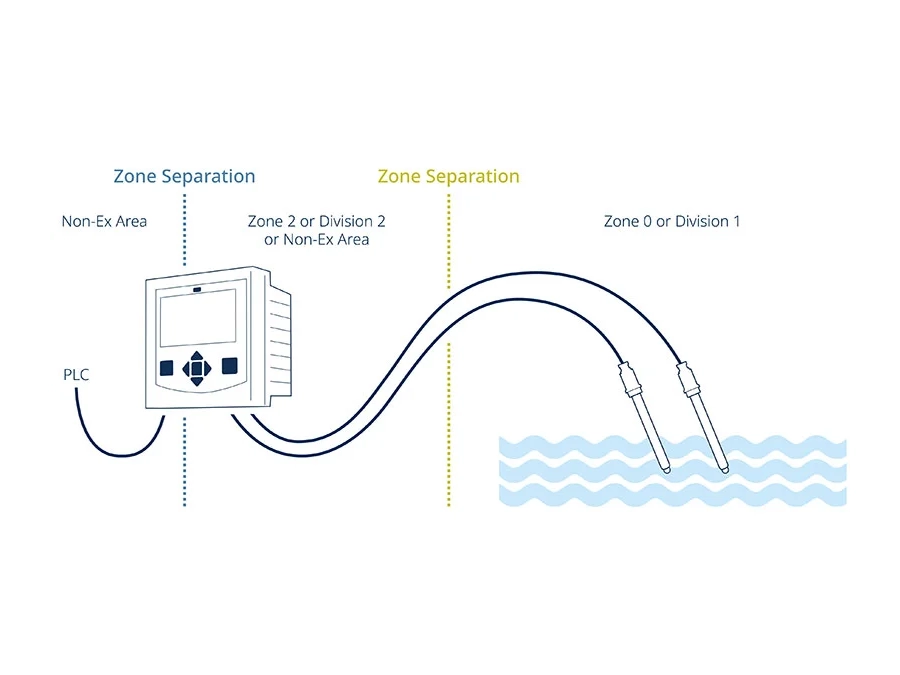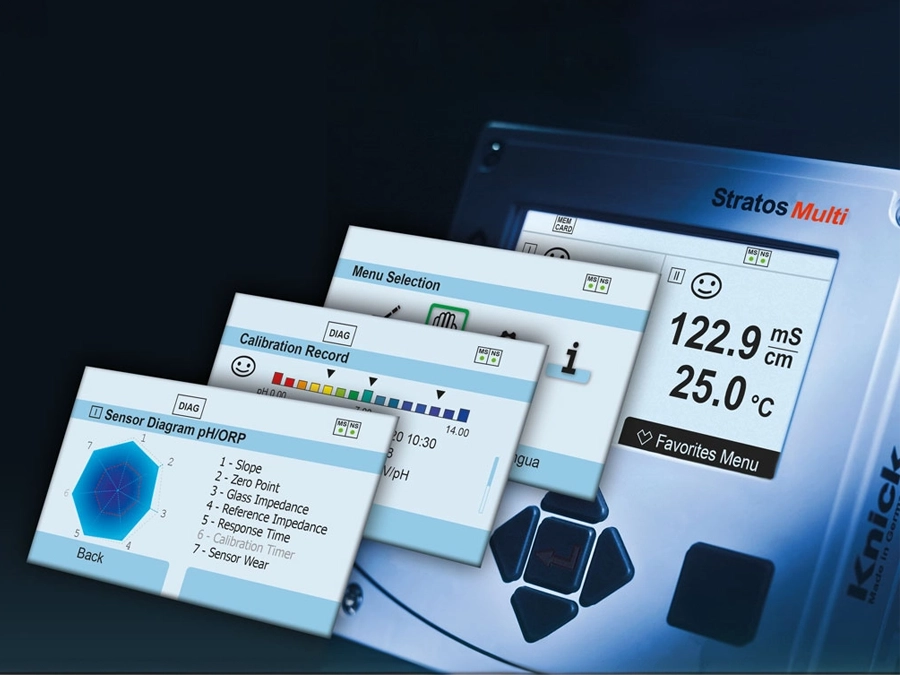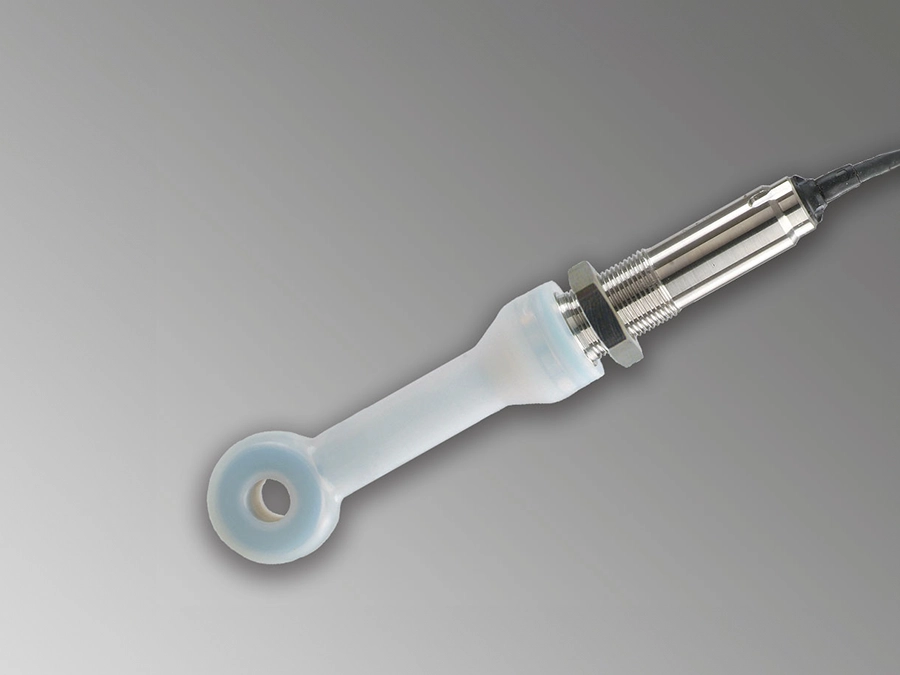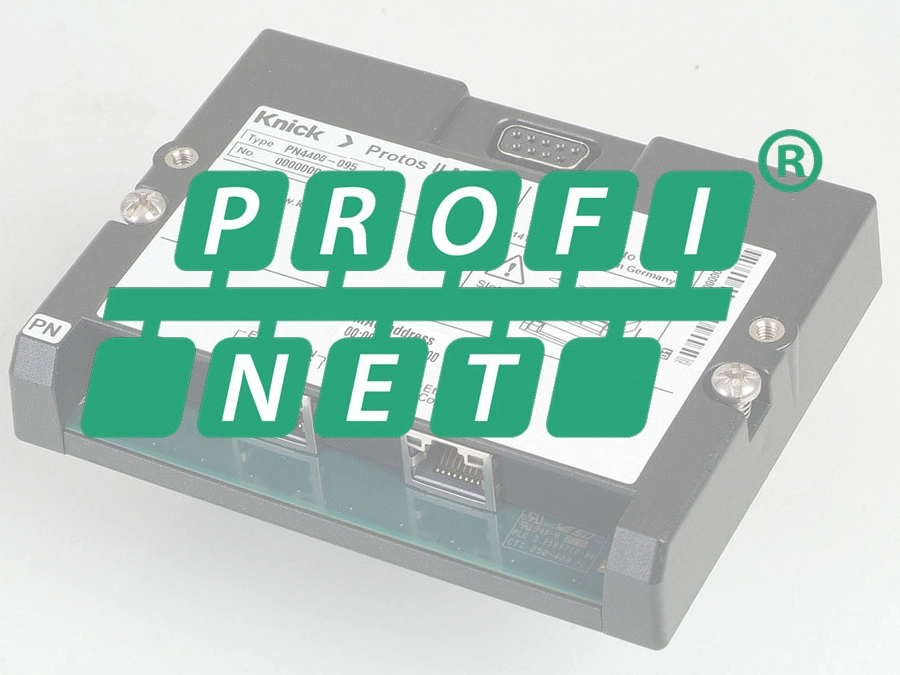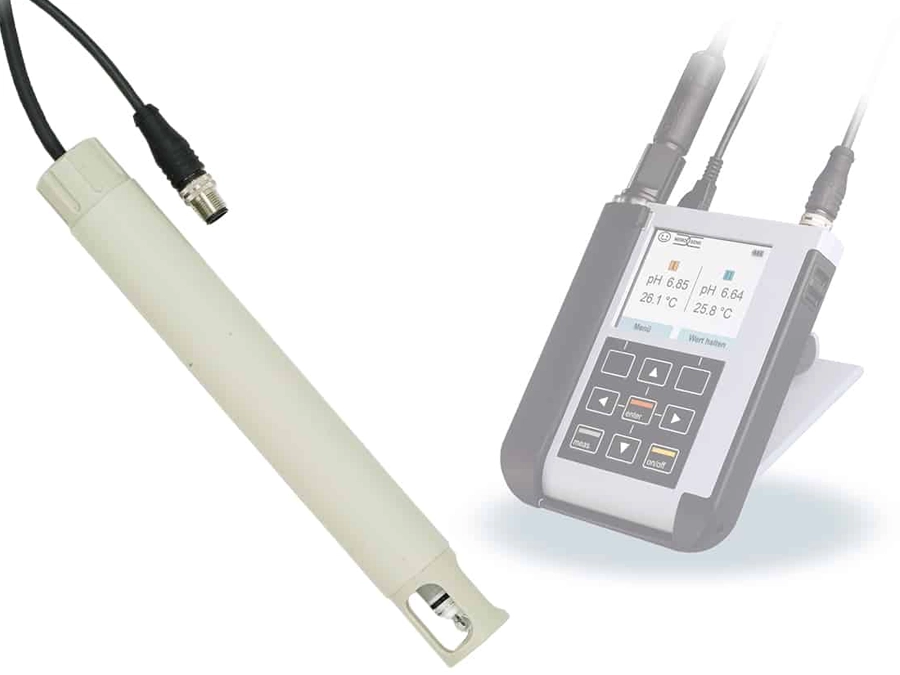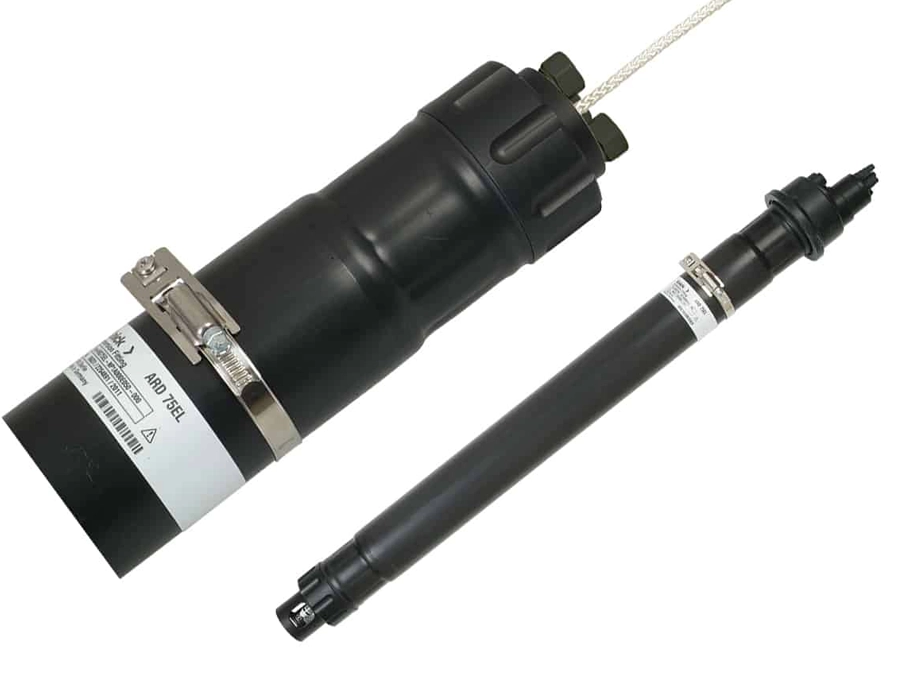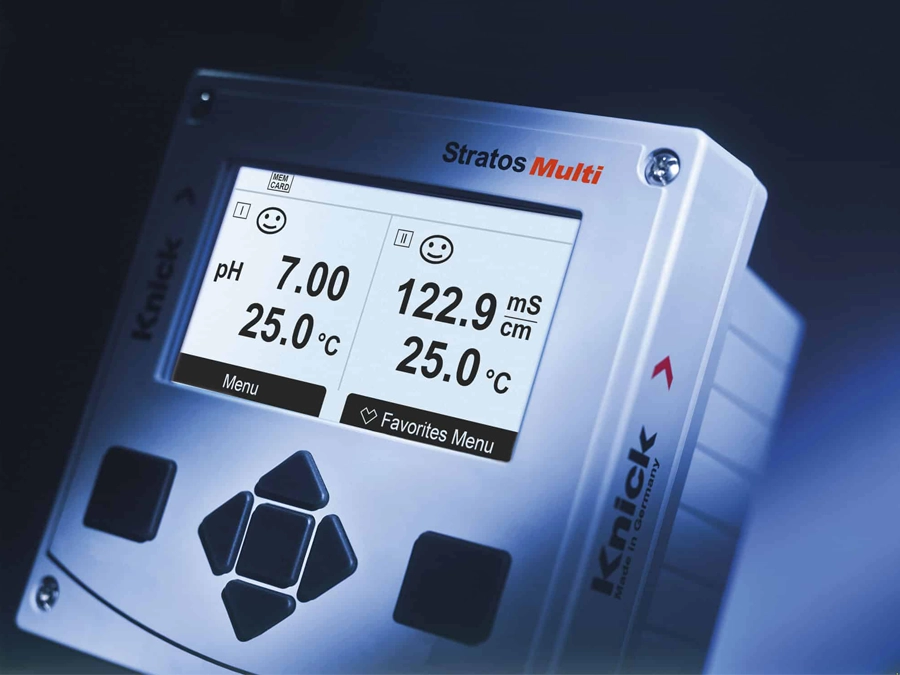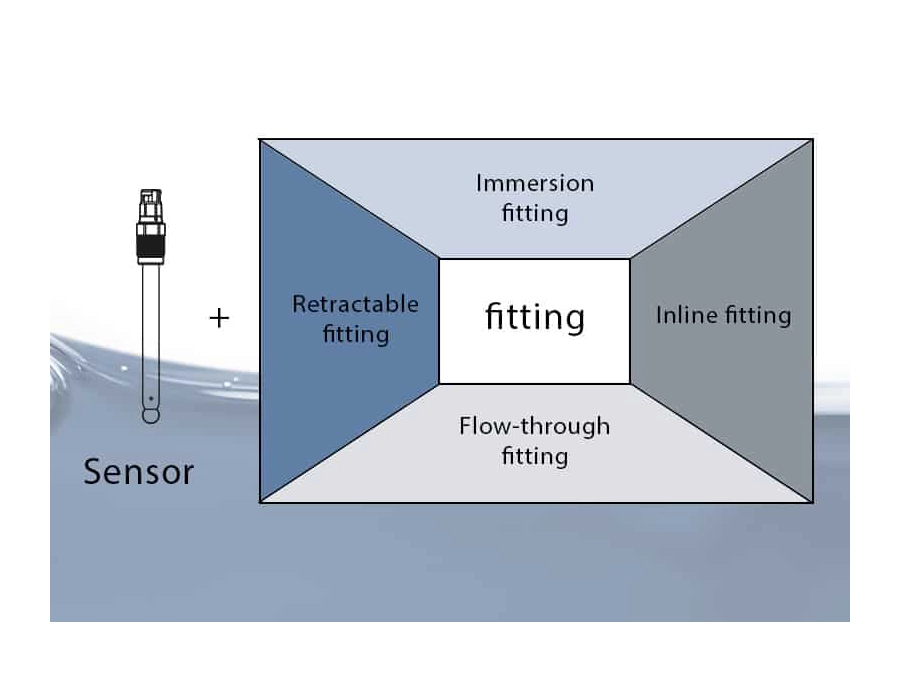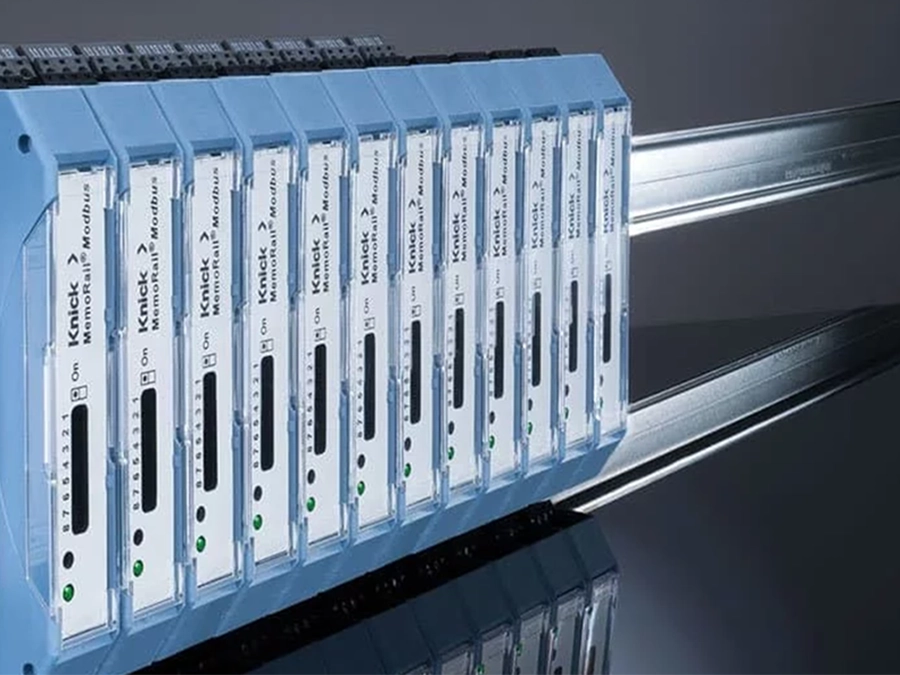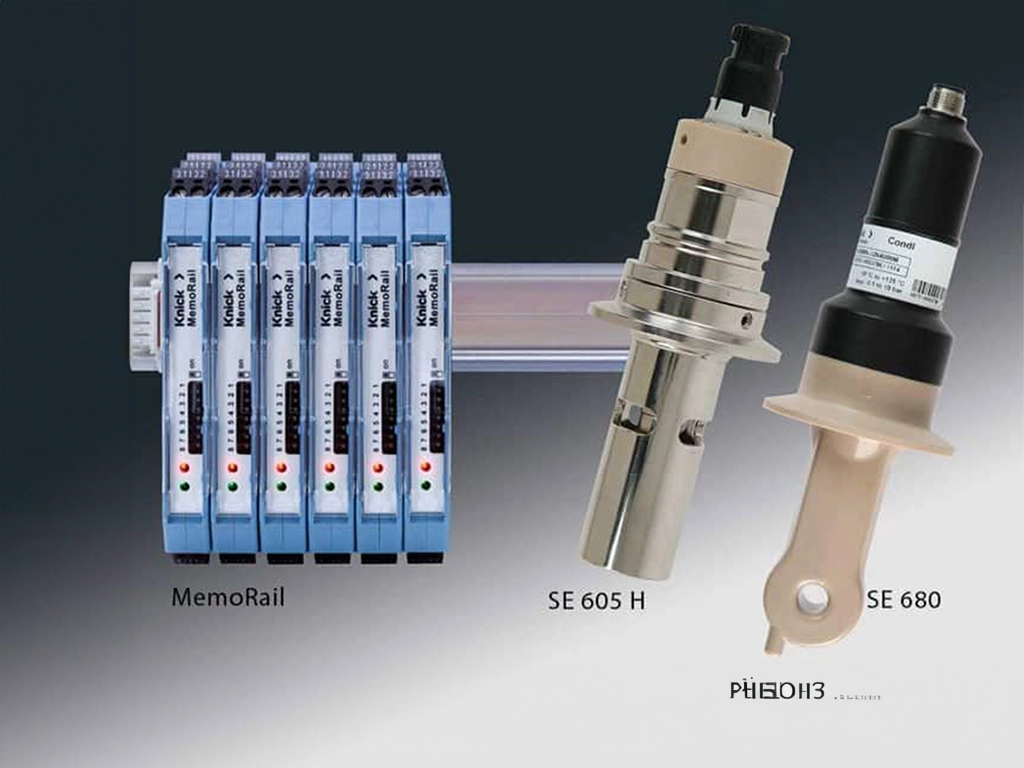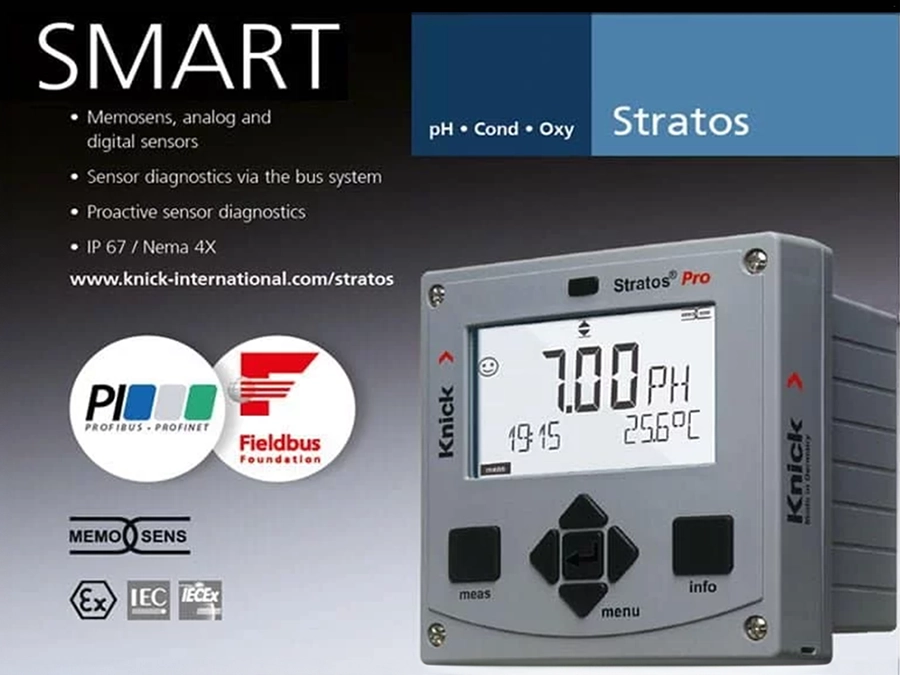ANALYSE DES PROCESSUS
Entreprises de distribution : optimisation de l’analyse des liquides
Dans les usines de production de l’industrie des procédés, diverses entreprises de distribution assurent entre autres le traitement de l’eau, la production de vapeur, le refroidissement et la récupération de l’énergie thermique. Le bon fonctionnement de ces entreprises de distribution est d’une importance critique pour le process de production.
Des pannes touchant p. ex. l’alimentation en eau ou la production de vapeur obligent de mettre le système principal à l’arrêt et engendrent des coûts importants
Dans les entreprises de distribution, différents produits chimiques sont ajoutés à l’eau pour éviter la croissance biologique et neutraliser les substances corrosives. Selon l’application, le dosage et le contrôle du process nécessitent des mesures du pH, du potentiel d’oxydoréduction (ou potentiel redox), de la conductivité et de l’oxygène dissous.
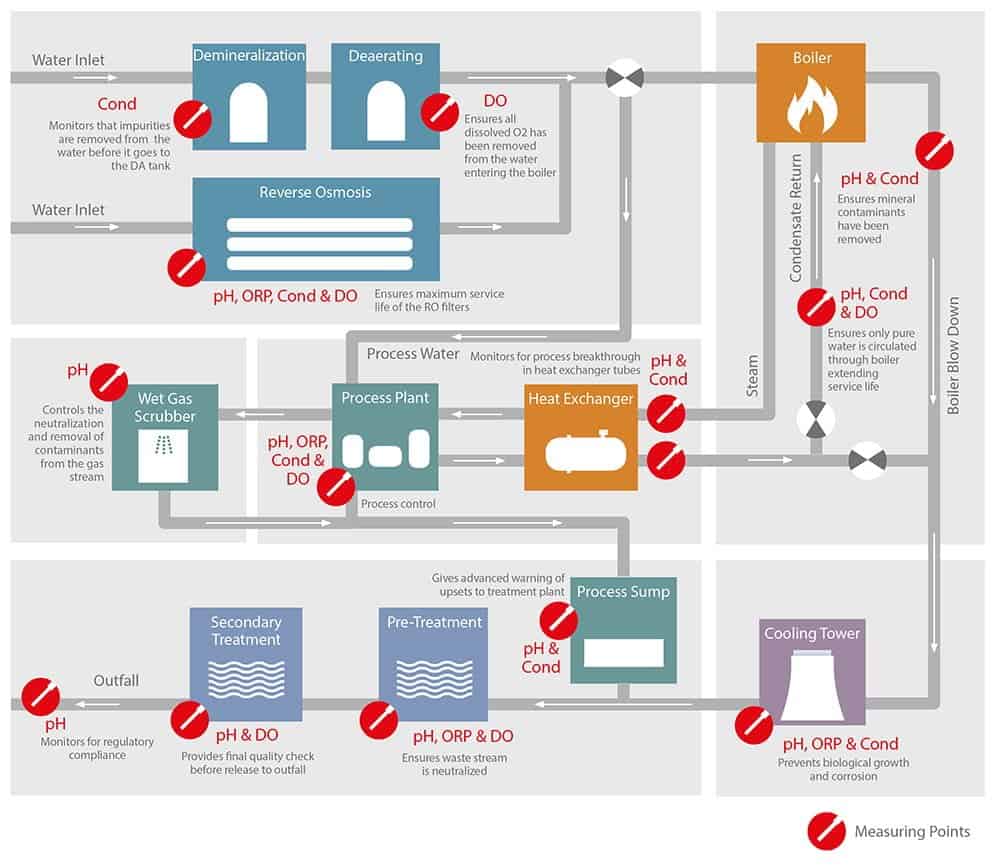
Protection des entreprises industrielles de distribution contre la corrosion, les dépôts et l’usure
Dans les installations de l’industrie des procédés comme les raffineries, les usines pharmaceutiques ou chimiques, de nombreuses entreprises de distribution assurent la mise à disposition et l’évacuation des fluides auxiliaires utilisés pour le process principal. Cela inclut presque toujours l’eau, à partir de laquelle doit être produite l’eau pure ou ultra-pure ainsi que de la vapeur pour le nettoyage et la stérilisation. Le traitement des eaux usées générées est également très complexe. Si l’eau doit être utilisée dans le process, alors elle est d’abord soumise à une filtration et à une désinfection dans des systèmes d’osmose inverse.
Pour pouvoir commander précisément le process d’osmose, il faut déterminer le degré de pollution de l’eau et la capacité de rétention par des mesures de la conductivité. Le dosage adéquat du chlore ajouté pour tuer les germes repose ici sur les mesures du potentiel redox. Le pH permet de déterminer si les dépôts calcaires sur les membranes d’osmose exigent leur remplacement.
Si l’eau ne doit pas être utilisée dans le process, mais pour produire de la vapeur, alors elle doit d’abord être purifiée dans une unité de déminéralisation totale puis son oxygène dissous doit être éliminé dans un dégazeur avant qu’elle puisse pénétrer dans le générateur de vapeur. Ces process sont donc contrôlés par des mesures de la conductivité et de l’oxygène dissous.
Production de vapeur, dissipation et récupération de la chaleur
Pour protéger de façon fiable les tubes chauffants dans le générateur de vapeur, il faut également mesurer le pH, la conductivité et l’oxygène dans le condensat issu des échangeurs de chaleur ou des tours de refroidissement avant de le réintroduire dans le circuit du générateur de vapeur. L’ajout de phosphate de sodium ou d’hydroxyde de sodium permet d’alcaliser l’eau afin de réduire la corrosion. D’autres ajouts, p. ex. d’hydrazine, permettent de fixer l’oxygène et réduisent également la corrosion.
Afin d’éviter des surdosages, qui pourraient à leur tour créer des problèmes, le dosage adéquat est réglé grâce aux mesures du pH et de l’oxygène dissous. La vapeur, déjà utilisée pour stériliser des composants d’installation, renferme encore beaucoup d’énergie thermique. Celle-ci peut être récupérée dans des échangeurs de chaleur et mise à la disposition d’autres process.
Dans les échangeurs de chaleur aussi, les tubes font partie des pièces particulièrement critiques, car des fuites causées par la corrosion peuvent conduire à des contaminations et à des dommages considérables sur l’installation.
Étant donné que, dans une installation intacte, la vapeur refroidie se dépose sous forme d’eau condensée pure, une conductivité élevée du condensat suggère qu’il y a des impuretés liées à la corrosion ou des ruptures dans le process. La chaleur industrielle inutilisée provenant des circuits de refroidissement est évacuée par des tours de refroidissement. Afin d’éviter ici des incrustations minérales sur les surfaces, le pH de l’eau est régulé en ajoutant des acides. De plus, l’ajout d’agents oxydants permet de désinfecter les tubes et d’éviter qu’ils ne se couvrent de substances organiques. Le dosage nécessaire est déterminé en mesurant le potentiel redox.
Neutralisation des eaux usées
Avant que les eaux usées puissent être rejetées dans les canalisations publiques, elles sont soumises à un dernier traitement jusqu’à ce que le pH, l’oxygène dissous et le potentiel redox atteignent la plage autorisée. Les eaux de process ainsi que les eaux usées issues d’épurateurs de gaz subissent le même traitement.
Prévention des problèmes de mesure dans les environnements humides
En général, les postes de mesure pour les entreprises industrielles de distribution sont exposés à des conditions ambiantes très humides voire mouillées, qui se révèlent problématiques en cas d’utilisation de sondes analogiques traditionnelles. L’humidité, la corrosion et les dépôts sur les contacts métalliques des connexions peuvent entraîner une dérive ou une distorsion des valeurs mesurées. L’utilisation alternative de sondes analogiques câblées augmente cependant les tâches de maintenance, car il faut retirer le câble du transmetteur à chaque remplacement de la sonde puis réinstaller le câble de la nouvelle sonde.
Les sondes Memosens offrent ici une solution idéale. La connexion sans contact de cette technologie de sonde n’est absolument pas sensible à l’humidité ni aux impuretés de tout type. Les distorsions des résultats de mesure liées aux contacts défectueux sont complètement exclues grâce à la transmission inductive de l’énergie et des valeurs mesurées. Les sondes Memosens améliorent ainsi les mesures du pH, du redox, de l'oxygène et de la conductivité dans les entreprises de distribution.
Retour sur investissement
- Les problèmes de contacts et les distorsions des résultats de mesure typiques des sondes analogiques traditionnelles dans des environnements humides ou mouillés sont complètement éliminés grâce à la technologie Memosens à isolation galvanique parfaite.
- La fiabilité élevée et la grande précision des mesures permettent un dosage prudent des produits chimiques. Ainsi, il est possible d’éviter les surdosages onéreux, d’améliorer la qualité du process et d’augmenter la durée de vie des installations des entreprises de distribution.
- Les mesures précises de la conductivité permettent d’identifier et de corriger les problèmes de corrosion et de fuites avant qu’ils n’engendrent des dommages coûteux ou qui affectent l’installation et l’environnement.
- Le temps nécessaire au changement de sonde est extrêmement plus court avec Memosens. Grâce à la possibilité de précalibrage en laboratoire des sondes Memosens, il n’est plus nécessaire de procéder à un calibrage incertain, coûteux et chronophage dans des conditions difficiles sur place.
Produits correspondants
Industries et applications correspondantes
Aperçu des applications et solutions de produits spécifiques pour différents secteurs des centrales électriques.
